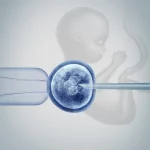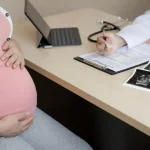
A failed match occurs when an intended parent’s initial donor or embryo pathway does not proceed as planned. This may be due to medical results, donor availability, lab performance, or mismatched expectations. In plain English: it’s when the original plan no longer works, and a new decision is required. Understanding this moment is critical, because upstream choices (donor selection, ovarian stimulation, sperm quality, or lab cutoffs) directly affect downstream results like embryo yield, implantation, and live-birth rates.
Who It Helps
Failed match planning supports intended parents at several stages:
- Age and history: Older age or prior failed cycles may suggest a different donor option.
- Lab and imaging: Uterine or ovarian findings may shift the best route forward.
- Response: Poor ovarian stimulation or sperm quality signals when another path should be considered.
By interpreting these signals early, families can avoid repeated failed attempts and instead pivot toward a pathway with higher probability of success.
Step-by-Step:
A failed match doesn’t mean starting over from scratch. The sequence usually looks like this:
- Assessment checkpoint — Review stimulation response, sperm parameters, or donor availability.
- Decision window — If thresholds aren’t met (low follicle count, poor sperm recovery, donor withdrawal), the team discusses alternatives.
- Adjust and redirect — Options may include frozen donor eggs, embryo adoption, sperm banking, or a different stimulation protocol.
- Restart with modifications — The new plan aligns with biology and budget, avoiding unnecessary delays.
This step-wise approach protects embryo quality and reduces stress by preventing repeated “trial and error.”
Pros & Cons
- Pros: Flexibility, tailored adjustments, faster time to a working plan.
- Cons: Emotional strain, added costs, possible delays if new donors or approvals are needed.
Understanding both sides allows parents to approach the process with realistic expectations.
Costs & Logistics
Failed matches can create surprise bills if not tracked. Key areas to review include:
- Line items: Ovarian stimulation meds, lab monitoring, retrieval attempts.
- Prior authorizations: Insurance approvals for new cycles or donor changes.
- Cash flow: Deposits for donor eggs, embryo shipping, or sperm retrieval procedures.
- Tracking tools: Simple spreadsheets or clinic portals prevent financial blind spots.
Families who budget for “plan B” upfront often experience less stress when adjustments become necessary.
What Improves Outcomes
Not all interventions meaningfully change results. Based on clinic experience:
- Helpful: cycle cancellation criteria, andrology optimization, genetic testing decisions, embryo culture quality, male-factor counseling, and careful trigger timing.
- Less helpful: unproven add-ons, repeating identical failed protocols, or ignoring calendar alignment.
The takeaway: outcomes improve most when decisions align biology, lab capacity, and logistics.
Case Study
One couple entered an IVF cycle with high hopes. After retrieval, only two embryos developed — both abnormal on testing. Instead of repeating the same cycle, their clinic recommended switching to frozen donor eggs. Within weeks, they secured a donor, fertilized six eggs, and produced three healthy embryos. A single-embryo transfer led to a healthy pregnancy. The difference came from early recognition of a failed match, clear communication, and willingness to pivot.
Mistakes to Avoid
- Continuing multiple failed cycles without changing variables.
- Overlooking cost implications of repeat meds and labs.
- Assuming every add-on boosts outcomes.
- Skipping legal or consent updates when changing pathways.
- Delaying decisions while waiting for a “perfect” match.
FAQs
Q. Does a failed match mean I can’t have success later?
Ans. No. Many families succeed after a failed attempt by adjusting donors, labs, or protocols. It’s a signal to pivot, not the end of the road.
Q. How quickly can I move forward after a failed match?
Ans. Often within weeks. If embryos or donors are already available, timelines are shorter. If new consents or insurance approvals are required, expect 4–8 weeks.
Q. Will insurance cover costs after a failed match?
Ans. Coverage varies. Some plans reset approvals per cycle, while others apply lifetime limits. Always confirm before restarting.
Q. How do clinics decide when to cancel a cycle?
Ans. Clinics use criteria such as follicle count, embryo development, or sperm quality. Cancellation may feel frustrating, but it prevents spending on cycles unlikely to succeed.
Q. What emotional support is available during this process?
Ans. Most clinics offer counseling or connect families with support groups. Emotional readiness is just as important as medical planning when pivoting after a failed match.
If you’ve experienced a failed match, you don’t have to navigate the next steps alone. Schedule a free 15-minute nurse consult, upload your labs, and receive a personalized cost breakdown for your case. By aligning biology, logistics, and budget, you can move forward with clarity and confidence.
Next Steps
- Free 15‑min nurse consult
- Upload labs
- Cost breakdown for your case.
Related Links

Dr. Kulsoom Baloch
Dr. Kulsoom Baloch is a dedicated donor coordinator at Egg Donors, leveraging her extensive background in medicine and public health. She holds an MBBS from Ziauddin University, Pakistan, and an MPH from Hofstra University, New York. With three years of clinical experience at prominent hospitals in Karachi, Pakistan, Dr. Baloch has honed her skills in patient care and medical research.





